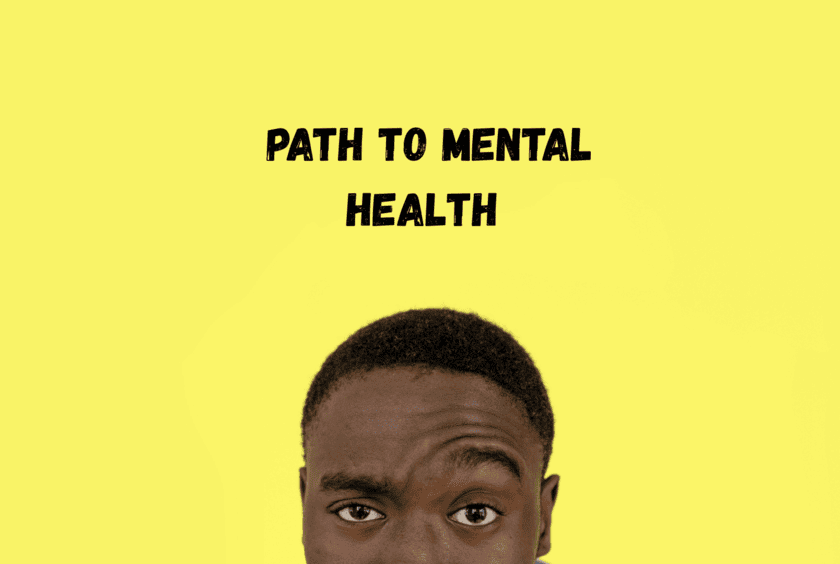What is Mental Health and Why Does It Matter?
Mental health goes far beyond simply not having diagnoses like depression or anxiety. It represents a state of emotional, psychological, and social well-being, where you are able to:
- Manage daily stress
- Maintain healthy relationships
- Make decisions with clarity
- Adapt to changes and challenges
It’s like an invisible foundation that supports your ability to live fully, even amid the turbulence of modern life.
Impact on Quality of Life and Productivity
When your mental health is in balance, everything changes:
| Area of Life | Benefits |
| Professional | Greater focus, creativity, and resilience under pressure |
| Personal | More authentic relationships and fewer conflicts |
| Self-care | Willingness to maintain healthy habits consistently |
On the other hand, neglecting this aspect can lead to a vicious cycle: stress harms mental health, which in turn reduces your ability to deal with stress.

Signs That You Need to Pay More Attention
Some subtle (and not-so-subtle) warnings that your mental health needs care:
- Constant fatigue, even after enough sleep
- Difficulty concentrating on simple tasks
- Irritability or feeling “on edge” frequently
- Disinterest in activities that once brought pleasure
- Significant changes in appetite or sleep patterns
“Mental health is not a destination, but a process. It’s about how you drive, not where you’re going.” – Adapted from Noam Chomsky.
The 3 Pillars of Mental Health in Your Routine
Self-Knowledge: Identifying Limits and Needs
The first step in taking care of your mental health is self-knowledge. This means understanding your limits, recognizing your needs, and knowing when it’s time to stop or move forward. Often, the rush of daily life leads us to ignore signs of fatigue, stress, or overload. Ask yourself: What makes me feel good? What drains me? These reflections help create a more balanced routine tailored to your pace.
- Set aside a few minutes daily to observe yourself.
- Write in a journal about your emotions and reactions throughout the day.
- Identify behavioral patterns that may be harming your well-being.
Meaningful Connections: Relationships That Nurture
Meaningful connections are fundamental to mental health. Healthy and affectionate relationships help us feel supported, understood, and that we belong. However, it’s important to prioritize relationships that truly nurture us, avoiding toxic or draining interactions. Invest time in those who make you feel good and don’t be afraid to set boundaries when necessary.
“The quality of our life is based on the quality of our relationships.”
- Connect with people who share similar values and interests.
- Practice active listening and empathy in your interactions.
- Dedicate quality time to being present with those you love.
Pause Moments: Essential Micro Breaks
In a fast-paced routine, moments of pause are essential to recharge your energy and avoid burnout. These micro breaks don’t need to be long, but they should be intentional. Take a deep breath, stretch, or simply close your eyes for a few moments. These small pauses help restore mental clarity and the willingness to continue your day.
- Incorporate 5-minute breaks every hour of work.
- Use breathing techniques to calm your mind.
- Disconnect from screens during these moments.
Common Obstacles and How to Overcome Them
Lack of Time: Adapting Quick Practices
Between meetings, commitments, and responsibilities, time seems to slip through your fingers. But self-care doesn’t have to be time-consuming—it can be adapted into small intervals. Try:
- Micro-meditation: Take a deep breath for 1 minute before replying to a message.
- Integrated movement: Take the stairs instead of the elevator or stretch while waiting for your coffee.
- Active listening: Turn commutes into moments to listen to inspiring podcasts.
The secret is to turn everyday life into opportunity, not to create a parallel routine.
Excessive Self-Demand: The Trap of Perfectionism
Wanting to do everything “right” can be paralyzing. If you’ve ever skipped a walk because you didn’t have the ideal outfit or avoided meditating because you thought you wouldn’t “turn off your mind,” know this: progress > perfection. How to deal with it:
- Lower expectations: 5 minutes of exercise is better than none.
- Celebrate attempts: even if the habit doesn’t become routine, the intention is already a step.
- Reinterpret failures: setbacks are data to adjust the path, not proof of failure.
“Perfectionism is the voice of the oppressor. Embrace ‘good enough’.” — Adapted from Anne Lamott
Difficulty Maintaining Consistency
Initial motivation fades, life gets in the way, and the habit is lost. Instead of guilt, try:
| Trap | Practical Solution |
| Forgetting to practice | Link the new habit to an existing one (e.g., stretch after brushing teeth). |
| Missing results | Record small victories in a journal or app. |
| Losing purpose | Revisit your “why” often—write it on a sticky note. |
Consistency is not about willpower, but about redesigning your environment and practicing self-compassion.
Practical Tools for Everyday Life
Breathing Tips for Stressful Moments
Breathing is automatic, but when done consciously, it can be a powerful tool to calm the mind and body. In stressful situations, deep breathing helps reduce tension and brings emotional clarity. Try these simple tips:
- 4-7-8: Inhale through your nose for 4 counts, hold for 7 seconds, and exhale through your mouth for 8 seconds. Repeat 3 times.
- Diaphragmatic breathing: Place one hand on your chest and the other on your abdomen. Inhale slowly, expanding your abdomen (not your chest), and exhale with control.
- Simple count: Inhale for 4 seconds, exhale for 4 seconds. Focus on the rhythm and sound of your breath.
These tips can be done anywhere—in traffic, before a meeting, or when feeling overwhelmed.
Simplified Emotional Journal
Recording emotions doesn’t have to be complex or time-consuming. An emotional journal helps identify patterns and process feelings practically. Here’s how to start:
- Quick model: Write 1-3 words about how you feel at the moment (e.g., “tired,” “happy,” “anxious”).
- Key questions: Briefly answer: “What triggered this emotion?” and “What do I need now?”
- Free form: Write 2-3 sentences without worrying about grammar or coherence. Let it flow.
Dedicate just 5 minutes a day—morning or before bed. Use whatever you have at hand: a notebook, notes app, or even voice memos.
Night Ritual to Slow Down the Mind
Creating a smooth transition between day and night is essential for restorative sleep. A simple ritual can signal to the brain that it’s time to relax:
- Digital disconnection: 30 minutes before bed, turn off screens or activate night mode.
- Calming tea: Prepare a chamomile or fennel infusion, sipping slowly in a peaceful environment.
- “Brain dump” list: Write down tasks or worries for the next day to clear your mind.
- Gentle stretching: Slow movements of the neck, shoulders, and spine help release accumulated tension.
In short, the secret is consistency, not perfection. Adapt the steps to your routine—even 10 minutes make a difference.
Integrating Body and Mind
Movements That Calm
Amid the rush of daily life, small pauses for gentle stretching or a brief walk can be transformative. You don’t need hours at the gym: 5 minutes of mindful movement already help to:
- Release muscle tension accumulated by stress
- Oxygenate the brain, clearing thoughts
- Reconnect with your body, breaking the cycle of anxiety
Try incorporating micro-practices, like stretching your arms when you wake up or walking barefoot on the grass during lunch. The secret is gentle regularity, not intensity.
Nutrition That Supports Emotional Balance
What we eat directly influences our mood and energy. Instead of restrictive diets, prioritize:
- Healthy fats (avocado, nuts, olive oil) for brain health
- Lean proteins (eggs, fish, legumes) for neurotransmitter production
- Fiber (whole grains, vegetables) to balance blood sugar
A practical tip: start by adding one nutritious food per meal, like seeds in yogurt or leafy greens in your sandwich. Small, sustainable swaps have more impact than radical changes.
Restorative Sleep as a Foundation
Sleeping well is the foundation for a balanced mind. Creating a simple nighttime routine makes a difference:
- Dim lights and screens 1 hour before bed
- Try calming teas (chamomile, fennel) or deep breathing
- Keep regular hours, even on weekends
If you wake up at night, avoid checking your phone. Instead, try visualizing peaceful landscapes or focusing on slow breathing. Remember: progress, not perfection, is the goal.
When to Seek Professional Help
Difference Between Everyday Challenges and Disorders
It’s common to face emotional challenges in daily life, such as work stress, relationship conflicts, or moments of sadness. These situations, although exhausting, are usually temporary and can be managed with self-care strategies and support from friends and family. However, when these feelings persist for weeks or months, significantly interfering with quality of life, it may be time to seek professional help.
Some warning signs include:
- Difficulty performing daily tasks
- Sudden changes in mood or behavior
- Persistent social isolation
- Recurring negative thoughts or suicidal ideation
Recognizing the difference between a temporary challenge and something more complex is the first step to seeking appropriate help.
Breaking Prejudices About Therapy
There are still many myths and stigmas around therapy, such as the idea that seeking help is a sign of weakness or that it’s only needed in extreme cases. In reality, therapy is a powerful tool for promoting self-knowledge, developing emotional skills, and improving quality of life, regardless of the severity of the challenges faced.
Some common myths include:
- “Therapy is only for people with serious problems.” In fact, therapy can benefit anyone who wants to better understand themselves or deal with everyday challenges.
- “Therapy is a sign of weakness.” Recognizing the need for help is an act of courage and self-care.
- “Therapy is expensive and time-consuming.” There are affordable options, such as online therapy and public health programs, and benefits can be noticed in just a few sessions.
Breaking these prejudices is essential so that more people can access the benefits of therapy without fear or shame.
Creating Your Personalized Plan
Building a self-care plan that works for you doesn’t have to be complicated. The key is to set realistic goals, track your progress without excessive self-criticism, and adjust the path according to your needs. Here are some steps to help you create a plan that fits your routine and goals.
Setting Realistic and Gradual Goals
The first step is to establish achievable and gradual goals. Instead of trying to change everything at once, start with small objectives that can be incorporated into your daily life. For example:
- If you want to exercise more, start with 10 minutes of walking a day.
- If you want to improve your diet, replace one processed food with a healthier option.
Remember: small steps lead to big changes. Celebrate every achievement, no matter how small, as this reinforces your motivation.
Tracking Progress Without Pressure
Monitoring your progress is essential, but it’s important to do so gently and without self-criticism. Use simple tools, like a journal or apps, to record your achievements and challenges. Here are some tips:
- Write down three positive things you did for yourself at the end of each day.
- Review your progress weekly, recognizing what worked and what can be adjusted.
Remember that setbacks are normal and part of the process. The important thing is not to give up and to keep trying.
Adjusting the Path According to Your Needs
Your self-care plan should be flexible and adaptable. As you progress, you may notice that some strategies don’t work as well as expected. That’s completely normal. Here are some suggestions for adjusting your plan:
- If a goal seems too difficult, break it down into smaller steps.
- If something isn’t bringing results, try a different approach.
The important thing is to listen to your body and mind and make changes that align with your well-being.
FAQ
How do I know if my goals are realistic?
Realistic goals are those you can achieve with the time and effort you have available. If a goal seems too difficult, try breaking it down into smaller steps.
What should I do if I’m not seeing results?
Review your plan and identify what can be adjusted. Sometimes, small changes make all the difference. And remember: results take time.
How can I stay motivated in the long term?
Celebrate every small achievement and remember why you started. Keeping a progress journal and sharing your goals with someone you trust can also help.
Creating a personalized plan is a continuous process of self-knowledge and adaptation. With patience and kindness, you’ll find the path that works best for you. Remember: self-care is a journey, not a race.
References:
- Heiland, Emerald G., et al. “Frequent, Short Physical Activity Breaks Reduce Prefrontal Cortex Activation but Preserve Working Memory in Middle-Aged Adults: ABBaH Study.” Frontiers in Human Neuroscience, vol. 15, 16 Sept. 2021, https://doi.org/10.3389/fnhum.2021.719509
- -CNN. “Conheça 10 Alimentos Bons Para a Memória E Para O Cérebro.” CNN Brasil, 10 Aug. 2023, www.cnnbrasil.com.br/saude/alimentos-para-a-memoria/.





























